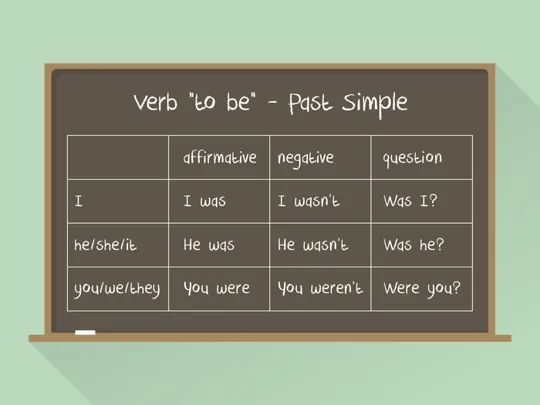Level
Upper Primary (Suitable for children aged 7–11 / Years 3–6)
Qualification
Not assessed
Exam Board
N/A
Hours of Study
Up to 5 hours per week (plus time for assignments)
Level
Upper Primary (Suitable for children aged 7–11 / Years 3–6)
Qualification
Not assessed
Exam Board
N/A
Hours of Study
Up to 5 hours per week (plus time for assignments)
Our Upper Primary English course helps your child become a confident communicator, fluent reader and thoughtful writer, while developing a lifelong appreciation for language and storytelling.
With a strong focus on grammar, spelling, punctuation, comprehension and composition, this course supports progress across all areas of learning — helping your child become a fluent reader, thoughtful writer and expressive speaker.
Lessons are age-appropriate and engaging, designed to nurture your child’s growing independence as they progress.
Requirements: Your child can begin at the stage that best reflects their current level of ability and confidence.
Study method: A parent-guided course with structured learning content. Expert Tutor feedback and a dedicated Student Progress Manager are included to help support your child’s progress. Optional video calls with Tutors are also available following assignment submission.

Key topics
Take a look at our Upper Primary English homeschooling course to see what your child will be studying, with these exclusive previews on our student learning platform. These will give you an insight into our approach to this subject, the different topics it covers and the types of activities and exercises your child will be doing once they get started.
Our easy-to-use online student learning platform gives your child instant access to everything they need for each of their courses. It’s where they’ll find all their study materials and resources, and where they can upload assignments, find out their grades and receive feedback from their course Tutors. You’ll also have parent access while your child is studying with us, so you can follow their progress and achievements.
We understand that every child is different, and our personalised approach to our students’ learning and wellbeing makes sure your child gets the support they need, when they need it. From their own dedicated Student Progress Manager to the option of 1:1 sessions with a specialist Tutor, your child has a friendly team behind them at every stage, so that they can unleash their full potential while studying in a safe and supportive environment.
We’re the only online school where your child can choose what, how, when and where they study – with no live lessons, set timetables, or crowded classrooms – for a 100% personalised, pupil-led learning experience. Our unique approach to homeschooling lets your child study at their own pace, in ways that work for them, wherever you are in the world – ensuring they really can learn without limits.
Meet the tutors
Tutors

Subjects
Teaching Levels
Tutors
My desire to work in children’s education began during my role as Art Teacher at a Summer Camp in New York. These children didn’t have much, but what they did have was an enthusiasm for learning! It was an honour to watch them grow and develop new skills.
Since then, I have taught a variety of ages and subjects in several schools. I believe a teacher can ignite a love for learning and a passion for a subject. My passion lies in the creative areas of the curriculum: I love art, design and music. I follow these passions in my spare time, creating elaborate cakes, transforming windows with snow spray art and frequently enjoy playing the piano.
Whilst I teach all areas of the curriculum day to day, I love to run extra-curricular clubs to encourage children’s interests in many creative areas. Over the years, my clubs have included, potion making, nature crafts, fashion design, silk screen printing and CSI (forensics) club to name a few.
During the pandemic, I embraced online teaching, discovering ways to overcome any challenges presented by learning remotely. I was amazed at how children’s education could continue seamlessly with the guidance of online support.
I am excited to be tutoring with Wolsey Hall Oxford and to continue to ignite creative passions in all of my students, whilst offering care and support throughout their educational journey.
Tutors

Subjects
Teaching Levels
Tutors
After completing a degree in English, I went on to complete a Primary PGCE specialising in Early Years and Key Stage 1. Although I initially began my career teaching in EYFS in the Reception class, I have since had the opportunity to teach throughout the whole Primary spectrum from Nursery all the way up to Year 6 and I have also had extensive experience of working with students with a range of special educational needs and disabilities. I think that having a broad teaching experience is really valuable as I am able to fully understand progression in learning and to recognise next steps.
Most recently I have taught as a 1:1 Tutor, working predominantly with pupils who are being home educated. I have found working with individual pupils to be hugely rewarding and I love having the opportunity to help the students to improve their self-confidence, and to develop motivation and enthusiasm. I firmly believe that these are the main attributes which lead to successful independent learning.
When I am not teaching, I love spending time outdoors walking in the countryside or by the coast. I also enjoy swimming, keep fit and I love to travel when I am able to. I am also an avid reader and like nothing more than curling up with a good book – preferably with my cat on my knee!
I believe that being a teacher is a really privileged position and I feel so fortunate to have been able to have the opportunity to share my love of learning with so many pupils over my teaching career. I am absolutely delighted to be a Tutor at Wolsey Hall and I look forward to sharing my enthusiasm for learning with many students and their families and to support them on their learning journeys.
Tutors

Subjects
Teaching Levels
Tutors
I am delighted to be a tutor for Wolsey Hall, supporting families and helping children reach their potential. Having been both a tutor and a Wolsey Hall parent, I believe that Wolsey Hall Oxford provides a wonderful, nurturing environment where students can thrive, and I strongly advocate for the flexibility and opportunities that homeschooling offers.
After leaving the pharmaceutical industry, I followed my heart into education, where I have been working for over 10 years, both in the UK and in British international schools in Sweden and Romania. My international school experience has given me a wonderful appreciation of cultural diversity, as well as extensive experience working with non-native English speakers within the British curriculum.
Maths, English, and Computing all build a solid foundation for students’ development. Through my teaching experience, I’ve worked with students in these subjects to build skills they can use every day: Maths encourages logical thinking and problem-solving, while English enhances communication and creativity. Computing combines these skills by applying logic through coding and developing precise, clear digital communication. I have particularly enjoyed running extra-curricular math games and coding clubs in the past and now love seeing my students’ creative computing projects, where they use various applications to develop their stories and coding skills!
Throughout my schools career, I have worked with students across the ability range, from gifted and talented learners to those with mild learning difficulties and social and emotional educational needs. At the heart of my teaching, I encourage students to embrace new challenges and maintain a positive attitude toward their learning by fostering a growth mindset. My goal is to support and challenge students through meaningful feedback that promotes their personal development.
Outside of teaching, I love spending time with family and friends and have an ever-growing list of interests: traveling, history, cultural activities, current affairs, tennis, walking, water-based activities, camping, and, most importantly, food!
Having grown up in Liverpool with most holidays spent in North Wales, I enjoy city living with nature on the doorstep. My family and I enjoy both the vibrancy and tranquility that Romania offers.
Tutors

Subjects
Teaching Levels
Tutors
My fascination with languages began in Primary School taster lessons, and I eventually followed a degree in French at the University of Birmingham, with Spanish as my Secondary subject. Having already spent a gap year in France, I lived in Lausanne and Valencia for the third year of my course followed by a year working at 3M in Brussels several years later.
I became interested in teaching once I had my own children and gained a PGCE in Modern Foreign Languages from King’s College London. After several years in Secondary Education, a chance advert led to a new job teaching Primary English, Maths, Lower KS2 Science and Humanities in an independent school. To my surprise, I found that both the age group and the broader range of subjects suited me perfectly. Apart from three years teaching Primary aged children in Virginia, USA, I remained at this school for 20 years. Alongside my classroom teaching I have been tutoring 1:1 for about 12 years in a variety of areas from English as a Second Language to 11+.
I have taught a range of students from very different backgrounds and age groups. However, certain elements have always remained key to a successful lesson: challenging and intriguing resources, a good-humoured atmosphere and a sense of security so that students feel able to explore ideas without fear of making mistakes. It is still such a pleasure to see a student gaining confidence in a subject that they were convinced they would always struggle with.
Now that my own children are independent, I am living between London and Antwerp, Belgium. I am currently learning Dutch, and this has been a very useful reminder of how daunting an unfamiliar subject can be. Sometimes it is good to be the student again!
I am looking forward to meeting homeschooling students from around the world and encouraging them to follow their interests and reach their full potential through Wolsey Hall Oxford.
Tutors, Tutor Services and Support

Subjects
Teaching Levels
Tutors, Tutor Services and Support
I have always been interested in how children learn. Indeed, my work experience placement at the age of 15 was spent in a Special School observing the various approaches that were used to ensure individual pupils had the very best provision. This led me to a four-year teacher training degree, graduating in 2001 with a QTS with English qualification.
Since then, I have been teaching mainly across the KS2 age range in Blackpool, Lichfield and Walsall. I played a big part in the development of PE and School Sport in Blackpool between 2002 – 2006, and then led Science, English and Maths in Lichfield, Dr Samuel Johnson’s birthplace. I love connecting with pupils and their education. In every class I have had, there are pupils who love or hate Maths or English or Science.
But there is always a way to spark their interest and to promote enthusiasm for every subject. And I take pride in enabling children to learn in their own way.
When I am not working, I love playing squash and going for a run. My Squash partner beats me regularly, but we somehow manage to have a really good battle on the court each week! I was never a runner growing up and even in my 20s, but I took it upon myself to get a bit fitter as I entered my 30s, and found myself running the London Marathon in 2017! It was the biggest challenge of my life, but the sense of satisfaction was incredible.
I am excited to be working with Wolsey Hall Oxford because of the time I will be able to spend with individual pupils, discussing and guiding their learning. I look forward to welcoming you as your Tutor, and to joining you and your child on your learning journey.
Tutors, Learning Support

Subjects
Teaching Levels
Tutors, Learning Support
I have been working with children now for around 25 years – starting off as a voluntary leader with Girlguiding UK, progressing to a Specialist Learning Support Assistant and then training as a Primary teacher specialising in History. Over the past 15 years, I have had the opportunity to teach a whole range of ages, from three year-olds up to adults, in both state and private schools. During that time, I have also specialised in working with learners with SEN, particularly dyslexia, ADHD and ASD, including training as an Irlen Visual Stress Screener.
I absolutely love learning and am particularly drawn to History and English – so much so that I continued to study Humanities, Art History and English whilst doing my teacher training. I like to visit museums and historic towns and villages around the UK with my husband and two daughters.
When I was a student, I had the opportunity to volunteer in a museum, interviewing local people for their oral history archives. A few years ago, I also teamed up with a film-maker to record a local history walk. I am fascinated by knowing about the lives people used to lead and how this relates to us now! It is also interesting how our language has evolved and this helps tremendously when teaching English.
When I’m not teaching or visiting interesting places, I like to keep fit. I was always very active as a child and this continued through playing various sports over the years including ladies’ and mixed rugby. I am now running again. I used to run 100m/200m for a club but, this time, longer distances from 5k to training for a marathon.
I have used my expertise to teach PE and the Sports Leaders programme at both Primary and Secondary Level, and most recently qualifying as an England Athletics Run Leader. I think it’s incredibly important to balance studying and working with wellbeing and health. I am qualified as a Mental Health and Mindfulness Coach, something that I have found is essential for all learners in any educational setting.
I am excited to be sharing my skills and experience with the students at Wolsey Hall Oxford.
Tutors

Subjects
Teaching Levels
Tutors
I did my degree in Accountancy at Exeter University, as I have always felt comfortable with numbers. They were either right or wrong and there was always a process to follow for getting something right.
After a while, that wasn’t enough for me. I wanted to do something more purposeful, something which had an impact on people’s lives. I trained to become a Primary School teacher at Oxford Brookes in 2007. It was here that I found my vocation.
During my PGCE, and ever since, I have rekindled my love of learning. I found I enjoyed learning new concepts and new skills. I fell back in love with English: how one sentence can have the power to change someone’s view. I understood Science: how things can be explained while others still need explaining. I became fascinated with Computing: understanding how coding works and how to build a series of simple instructions into something beautifully complex. I fell further in love with Maths: making concrete learning become abstract. I spent hours researching and learning about History and Geography and its impact on the lives we live today. After studying French at school, I began to teach Year 6 groups in my spare time, and became the Modern Foreign Languages Co-ordinator at school.
I have also become fascinated in discovering how people learn. It’s interesting finding out how the same lesson could be received in completely different ways by two different students. I have spent many hours happily reading a variety of books on emotional wellbeing, on Psychology, on growth mindset, all to work out how to have the greatest positive impact on students.
Saying all this, nothing is better than really getting to know the student. It is the main reason I became a freelance Tutor. I enjoy talking with the student about their greatest successes and how they deal with their biggest failures. I enjoy finding out what turns them off learning, and what reignites it. I love teaching meta-cognitively; helping the student to learn about their own learning.
This love of metacognition, linked with an understanding for children to build up confidence outside of the classroom, was the reason I trained to become a Forest School Leader. In my spare time I still work as a Forest School Leader, and if not, I’ll probably still be outdoors, doing gardening or making up games with my children.
Tutors

Subjects
Teaching Levels
Tutors
I have a proven track record as a teacher in Primary Schools and as a lecturer focusing initially on Key Stage One and Early Years. However, I have taught all Primary age groups and children with Special Educational Needs and I have enjoyed mentoring both children and adults.
I have an affinity with homeschooling because it enables the needs of children and their individuality can be nurtured so effectively. Some of my friends’ children were homeschooled, and they went on to excel in their fields.
I like to help learners to become confident and enjoy their achievements. Having taken myself back to university to complete my Masters (in Education), I understand the pleasure that comes from continuing to learn. I recently attended a course on Phonics in The Early Years and Key Stage One and I’m a firm believer in lifelong learning.
I love to be reflective and am fully versed in study skills and pedagogy in education. I have successfully helped parents and children to develop these skills. I have spoken at educational conferences on work-based learning and education and have published a paper on online learning. I am flexible, adaptable, creative and enjoy working with others.
My hobbies are walking in the countryside and researching aspects of current affairs and science more deeply. I can draw and paint, and I like to dance.
I am delighted to be working with Wolsey Hall and to sharing my passion for education with you.
Tutors

Subjects
Teaching Levels
Tutors
Following the award of my degree in Drama and Education, I trained as a Royal Academy of Dance ballet teacher going on to teach ballet for a number of years. The joy, delight and curiosity of my pupils, and of my own children, sparked my desire to become a Primary School teacher. I completed my PGCE in 2006 and have taught in a variety of schools across the Primary age range.
Teaching should ignite a questioning mind and I love to help children make connections to the world around them. I encourage a positive attitude to learning, resilience and confidence in their own abilities in every child I teach.
As a Primary School teacher, I have an interest in many subjects with Reading and Writing the foundation stones for learning in them all. I am an avid reader and love to promote reading through my teaching, making links with authors, illustrators and opening children’s eyes to the wide range of amazing books that are available.
I have further specialised in Computing, which is a fantastic subject to explore as it develops logical thinking with imagination and creativity. I actively link the debugging of code to all other subjects – if you can spot, learn from and improve upon your mistakes you will go far in whatever you set your mind to.
In my free time I enjoy archery, representing my county at regional and national competition. I also love walking in the countryside around my home and taking photographs of the beauty around me. I have recently taken up the banjo, re-igniting my childhood passion for music.
I am looking forward to supporting your family through their learning journey here at Wolsey Hall Oxford.
Tutors

Subjects
Teaching Levels
Tutors
After achieving a degree in BA Combined Arts (Psychology and Sociology) at the University of Leicester in 2006, I completed my PGCE at the University of Northampton and accomplished a life long ambition, gaining QTS in 2007. Teaching has been a dream of mine ever since I used to line up my toys and take the register! Having always wanted to be a Primary school teacher, my passion and enthusiasm for the role has continued and is something I’m excited to bring to Wolsey Hall.
Throughout my career, I have taught from Years 2 – 6, which has given me a great feeling for the whole Primary learning journey. I have a particular interest in Maths and Science. Experiencing those ‘light bulb’ moments of clarity in Maths, as well as the awe and wonder of scientific discovery were the memories that I cherish the most about my own learning. Seeing similar reactions in the children I teach brings me such joy!
I have taught in two Primary schools in Buckinghamshire, been a Subject Leader for Science, and have run After School Science clubs in order to extend children’s knowledge and curiosity for the subject. Teaching Maths is a strength and I’ve always enjoyed helping children learn and apply different problem-solving techniques.
Writing stories and humorous poems has always been a passion, along with a great love of baking, cooking, and making things for family and friends. The rest of my out-of-school time is dedicated to entertaining and being with my two children.
Tutors

Subjects
Teaching Levels
Tutors
I had considered teaching as a possible career for as long as I can remember, but it was not until my time as a University student that I seriously thought about it being my vocation. During my second year, I started a voluntary placement at a local Primary school as part of a University initiative to widen its engagement with the local community; from the start, I was hooked! Seeing teachers build their students’ confidence and nurture a love of learning was inspirational and incredibly powerful, and was something that I wanted to be a part of. After leaving University and realising that the teaching bug had not left me, I enrolled on a PGCE course with the University of Cambridge and became a qualified teacher in 2008.
Over twelve years, I worked as a Primary teacher in several urban settings; in that time, I was lucky enough to be offered a wealth of opportunities to develop my practice. I became a Mathematics Specialist Teacher in 2013 after studying with the University of Northampton for two years and this greatly developed my ability to ‘reach out’ to those pupils who struggled with the subject. Seeing that problems can be represented through pictures and that sweets – and even powder paint – can play a role in solving number problems greatly reduced their inhibitions, and gave them practical experiences that enabled them to retain new and forgotten concepts more easily. In 2015, I also became a Local Authority Key Stage Two Writing Moderator. In this role, I work with teachers from a number of schools to support and confirm their writing assessment judgements, and this has not only greatly increased my own subject knowledge but has also allowed me to ‘borrow’ many fantastic teaching ideas from other settings.
Currently, when I am not striving to inspire students in my work in schools and as a private Tutor, I enjoy walking and swimming. I like to see myself as a lifelong learner and have recently taken on the challenge of learning Italian as a beginner. I also love to travel: over the years, my wanderings have taken me to Iceland, where I worked to repair boardwalk trails in the Vatnajökull National Park, to China where I walked (part of) the Great Wall.
Tutors

Subjects
Teaching Levels
Tutors
Since qualifying for Primary teaching in 1990 I have spent over 30 years working across the whole Primary age range with children from 4-11 years of age – and I love it! There is nothing like the buzz and satisfaction of someone loving learning and finding that they can achieve things they never thought possible, whilst all the time having fun and finding their inner confidence.
I teach the whole curriculum but my particular passion is teaching literacy skills. To establish a love of reading and writing is one of the best gifts you can give, enabling a lifetime of self-expression and the skills needed to do anything a person desires. It is this belief that led me to lead English in school for almost 20 years, spending eight years as Assistant Headteacher whilst developing a program of ‘catch up’ for those disillusioned children who have a belief that they cannot read and write.
It was the most satisfying time of my career to see children blossom into avid learners. They became successful students using the nurturing strategies of gardening, cooking and lots of talking to develop those all-important skills in English, and realised that they can achieve and learn now that they have some self-confidence.
I also enjoyed researching the best strategies for supporting students who are new to English and sharing the results of that research in a town-wide project which led to many of us learning new skills.
When I am not teaching, I enjoy the great outdoors, walking and gardening. I love any number of crafts and can usually be found sewing, silversmithing, trying new workshops – either that or engrossed in a book which I seem to get through far too quickly!
Tutors, Learning Support

Subjects
Teaching Levels
Tutors, Learning Support
I began my career as a nursery nurse, working with children from birth to five in Foundation Stage settings, including as a pre-school manager. I thrived in creating a stimulating learning environment for children in which they could become active and curious learners. My experience as a nursery nurse highlighted the importance of laying strong foundations in the early years.
Whilst working as a nursery nurse, I studied with the Open University to complete my BA in English Literature and then completed the Graduate Teacher Training Programme with the Shire Foundation in Luton, gaining QTS in 2011.
As a trained teacher, I have taught in a range of Primary schools gaining a wealth of experience teaching in Early Years, Key Stage 1 and 2. I have found teaching such a rewarding career, and I am delighted to be a Tutor at Wolsey Hall. I’m passionate about teaching children to develop a love of learning and help inspire them to become lifelong learners.
I encourage all children to be resilient, independent learners and teach them how they can reflect on their learning in order to improve further.
I enjoy teaching all subjects, in particular, reading and writing. I love how reading can spark children’s imaginations and transport them to different worlds. Enriching children with the power of language and exploring the meanings of new vocabulary, enables their creative ideas to flow.
In my spare time, I enjoy reading a range of novels, experimenting with baking unusual recipes and participating in my Latin dance classes. Most of my time is spent being Mum to my three very energetic children and participating in their fun, imaginative and very messy adventures!
Tutors

Subjects
Teaching Levels
Tutors
I first became interested in teaching while on work experience in a Primary school when I was 14. I loved the busy atmosphere of school life and the energy of the children. As a teenager, I was fortunate to have some amazing teachers who took the time to make their lessons fun and inspiring. The idea of creating an environment where children are happy, confident and excited to learn has stayed with me and shapes my teaching to this day.
I graduated with a BSc in Psychology from the University of Plymouth after completing my dissertation in Childhood Emotional Development. I continued to volunteer in Primary schools throughout my degree and went on to take a PGCE at Plymouth Marjon University. Over the last eleven years, I have taught across the Primary age range, with most of my experience being in Year 5 and 6 and specialising in Maths.
I have always been curious about the world around me and love learning new things. I love being outdoors, hiking and exploring my local area and further afield. Since childhood, I have been fascinated by History and now volunteer with a local archaeology group. I love to imagine what a landscape was like in the past and how people might have lived there.
Now working from home with my one-year-old daughter, I am seeing my role as a teacher in a whole new light. Watching her experience the world for the first time has made me more aware than ever of how valuable a child’s learning experiences are.
I strive to nurture curiosity and a sense of wonder in my pupils, encouraging them to ask questions and explore. I strongly believe that while we cannot teach our children everything they need to know, we can teach them how to find out.
Tutors

Subjects
Teaching Levels
Tutors
I have been a Primary School teacher for fourteen years. I enjoy inspiring children to learn through active learning and believe enjoyment should be the centre of everything. If a child is happy and enthused in what they are doing, they will want to learn. I am particularly fond of a memory when my class found a hidden den with a mystery inhabitant in the wildlife garden. This led to a creative curriculum that the children found motivating.
In my teacher training, I chose numeracy as my specialism, as I find it fulfilling to help pupils with their misconceptions and build links between concepts. For the last two years, I have held a Maths club, where the children enjoy mathematical challenges through games and puzzles; this enables them to develop their learning whilst having fun.
I have also enjoyed teaching literacy, especially early writing and phonics. I love using children’s storybooks to build learning, looking at the language used and sentence structures to create children’s own versions of the text. My teaching has been inspired by educators such as Pie Corbett, who is a master of storytelling.
I’m always keen to encourage children to be resilient and independent in their learning, thereby enabling them to reflect and improve.
When I am not teaching, I enjoy being outside, either running, cycling with my husband on our tandem or enjoying the garden. I am also a keen music lover and go to over thirty concerts every year.
I am looking forward to working with Wolsey Hall Oxford as I particularly enjoy working with pupils individually, preparing them for their future and ensuring that they reach their full potential.
Tutors

Subjects
Teaching Levels
Tutors
Following a degree in Ecology, I spent two years living in Australia and New Zealand working in Conservation and Environmental Education. This sparked my enthusiasm for teaching and working with children. On my return to the UK I completed my PGCE and have worked as a Primary School teacher since 2006.
I really enjoy building lasting relationships with my students, often learning from them as much as they learn from me. This shared enthusiasm for learning allows me to develop students’ thinking. I love seeing when that learning clicks and that knowledge and understanding is embedded. Watching my own son learn, develop and grow has made me reflect even more on my own practice and what I give to the children I work with.
Helping to develop their natural curiosity about the world around them and making connections in their learning. I still work part-time in the classroom which gives me the time to develop my passion for outdoor learning as a Forest School leader as well as volunteering for a local charity helping set up Secondary School allotments providing children with an opportunity to grow their own food and promoting sustainable living.
In my free time I enjoy exploring the world by foot, bike or kayak but also love reading by the fire at the end of the day.
I look forward to meeting my new students and helping them with their own learning journeys.
Tutors

Subjects
Teaching Levels
Tutors
I am a ‘people’ person who loves facilitating learning. I enjoy working in a team environment with children and adults and building valuable rapport with colleagues, pupils and parents.
I am an experienced teacher from Reception to Year 6, and I believe I do it well. Children enjoy learning with me and my wish is to help them become confident, communicating, creative, choice-making citizens.
I aim to demonstrate an appreciation for diversity and I ensure that each child in my care feels respected and included. I have ambitious but achievable expectations for those I teach.
My teaching practice has been influenced by the Royal Shakespeare Company Ensemble work training, the research of Reggio Emilia, and child-centred approaches. I am enthusiastic and dedicated to the children that I teach, and I look forward to sharing my experience with you.
I enjoy life. Travel, sporting, caring and learning activities fill my time out of work. I support charities through sponsored events such walks, runs and even a skydive. I follow my dreams: I have travelled the UK on a motorbike, travelled around Australia, learnt to ice skate, to fence and stand-up-paddle board.
Tutors

Subjects
Teaching Levels
Tutors
I am an enthusiastic, fully qualified primary school teacher, with over 15 years’ teaching experience. I am passionate about every child achieving their best. I qualified as a primary teacher in 2007 and have since worked in a variety of schools, across both the private and state sectors. I have taught children from ages 5 to 11 in all primary subjects and have an excellent working knowledge of the Key Stage 1 and 2 curriculum. Additional roles have included: Literacy Lead, Art and Design Coordinator and Eco-Schools Coordinator.
For the last few years, I have really enjoyed tutoring children aged between 5 and 11 years in Maths and English on a 1:1 basis. As a tutor, I take time to get to know every child as an individual, working together to build confidence, independence and self-esteem. This personalised approach ensures they are equipped to make rapid progress. I feel one of my key strengths is to form strong relationships with families, in order to ensure every child achieves their full potential. I am committed to providing outstanding teaching and feedback, to enable all children to meet the challenges of the twenty-first century.
In my spare time, I like to explore our local beaches, paint, meditate, read and swim. Painting and the seaside have always been my passions. From a young age, I was happiest with a paintbrush in my hand, or splashing about in the sea! I am now lucky enough to live by the coast and sell my large, vibrant paintings of the area in local galleries.
I look forward to sharing my love of teaching and learning with your family.
Tutors

Subjects
Teaching Levels
Tutors
With my BSc in Geography and before gaining my QTS in Primary Education on a Graduate Teacher programme in 2003, I worked with children with physical and learning difficulties. This was in a residential and day school in Kent, and I found it very rewarding. I had known from an early age that I wanted a career in Primary Education.
I have been teaching for 17 years in a mix of EYFS and Years 1 – 6 classes. The two things that remain constant in my career are my love of teaching and the importance of health, nutrition and fitness. Buddha said, “To keep the body in good health is a duty otherwise we shall not be able to keep the mind strong and clear.” This perfectly sums up what I believe most about teaching and the importance of keeping children fit and healthy so as to become great learners.
I’m excited by the new challenges I face. I love teaching in school, online and one to one. I thrive on figuring out a child’s strengths and weaknesses, modifying my teaching style to suit them, and then seeing them inspired. I look forward to doing so with your child! As your child’s Tutor I’m here to support you and answer any questions you may have.
Following a move to Penzance in West Cornwall, I am in a county surrounded by beautiful beaches and views of St. Michaels Mount. I enjoy spending time as a mum with my three-year-old boy who loves being outdoors, and spending time walking with my friends along the coastline.
I enjoy playing tennis, cycling, baking gluten free bread and cakes and gardening.
Tutors

Subjects
Teaching Levels
Tutors
I gained my first degree from Sheffield Hallam University, and straight after that, I moved abroad to Spain, where I taught English in a Pre-Preparatory School for several years. It was here that I discovered that children teach you just as much as you teach them because I came away fluent in Spanish, having not taken one lesson and not knowing a word before working there!
Fast forward a few years and living back in England, I married and started working for the Open University as an IT Project Manager. I took advantage of being able to study for free with them and gained a BSc (Hons) in Psychology. I am therefore fully aware of the challenges presented when you are learning from home, the pressures associated with submitting assignments and the wait for that precious feedback. It is why I always try to return assignments promptly!
Becoming a foster carer was a turning point in my life and pointed me back to my passion for teaching children. Supporting children who have had trauma in their lives to regain the joys that learning can give makes everything worthwhile. I, therefore, gained my PGCE and have now taught in a variety of Primary School settings. I particularly love how technology can bring lessons to life, and it is here again that I frequently learn just as much as I teach. I love being amazed by the combinations that a child’s imagination mixed with technology can bring; a geographical biome being created and described in Minecraft being my favourite!
I am also the literacy lead in my current school and enjoy using different texts to promote the joy of reading, and I love encouraging those budding young authors amongst us. Science is also a passion of mine; I thrive on encouraging children to ask questions on how the world works and find joy in watching them discover the answers.
As well as being a Primary School teacher and foster carer, I also keep myself busy through learning new languages; endeavouring to make my morning shuffles more into a morning jog, and writing fiction stories.
Tutors

Subjects
Teaching Levels
Tutors
Growing up in a home that placed education as the utmost priority, I knew from a young age that I wanted to be a teacher. After graduating with a Bachelor’s Degree in History and Education, I began teaching. A few years later, with experience under my belt, I went on to earn a Masters in Teaching with a focus in Literacy.
During my time as an educator, I have taught a variety of subjects in the Primary curriculum to a wide range of learners, tutored for the 11+ and marked English exams. The two things that remain constant in my career are my love for teaching, and for reading and writing. Reading and writing are both fundamental in understanding all subjects across the primary curriculum. They are also essential in understanding others and expressing yourself so that others will understand you. Writing also enables me to learn so much about my students, not just as authors but who they are as people.
Ignacio Estrada said, “If a child can’t learn the way we teach, maybe we should teach the way they learn.” This quote perfectly sums up what I have enjoyed most about teaching over the last 14 years and what continues to motivate me. Every child is different. I love the challenge of figuring out their strengths and weaknesses, and then tweaking lessons to suit those strengths and seeing them inspired. I look forward to doing so with your child!
When I’m not teaching, I love reading, playing football, doing yoga and running outdoors! I also continue to learn by taking online courses. At the moment I am taking ‘Introduction to Family Engagement in Education’ which explores the research linking family engagement to better educational outcomes. I have also recently obtained a certificate as a Dyslexia Therapist.
Tutors

Subjects
Teaching Levels
Tutors
I was born and grew up in Kenya, and qualified as a Key Stage 2 teacher with the London School of Modern Montessori. My children were also born in Kenya and as we lived too far from any town, it became necessary for me to homeschool them. We had no electricity, so entertainment took the form of reading, resulting in a love of books for the whole family.
Homeschooling the children was a wonderful experience. Teaching them to read and write gave way later on to more structured lessons in English, Mathematics and Science. Our classroom was frequently on the beach, in the forest or in a more formal, classroom type environment in the house. By the time the children went to an English National Curriculum school in Nairobi, at the ages of 10 and 7, they were well prepared and able to adapt to normal school life very quickly. The reading ages of both were well above their chronological age by the time they went into formal schooling.
I also became a teacher in Kenton College Preparatory School in Nairobi – a member of the IAPS group of British schools around the world. I stayed there for almost 20 years, teaching a variety of Key Stage 2 classes. I left Kenya to live in England where I became a private Tutor to children who felt the need to supplement their school lessons. My students all achieved an improvement in their SATs results. I also help students working towards their 11+ exams.
My most rewarding experiences have usually been as a result of teaching. Whether in a formal, classroom setting, when a child suddenly understands something he/she found complicated, or just sharing a small piece of information with someone whose response was, “Wow, I didn’t know that. Thanks for telling me.”
Choose the perfect combination of courses for your child with our flexible approach to homeschooling. The more courses you select, the more you save per course.

From £570 per course

From £522.50 per course

From £475 per course
Trustpilot Reviews
Rated 4.7 / 5 based on 277 reviews.
